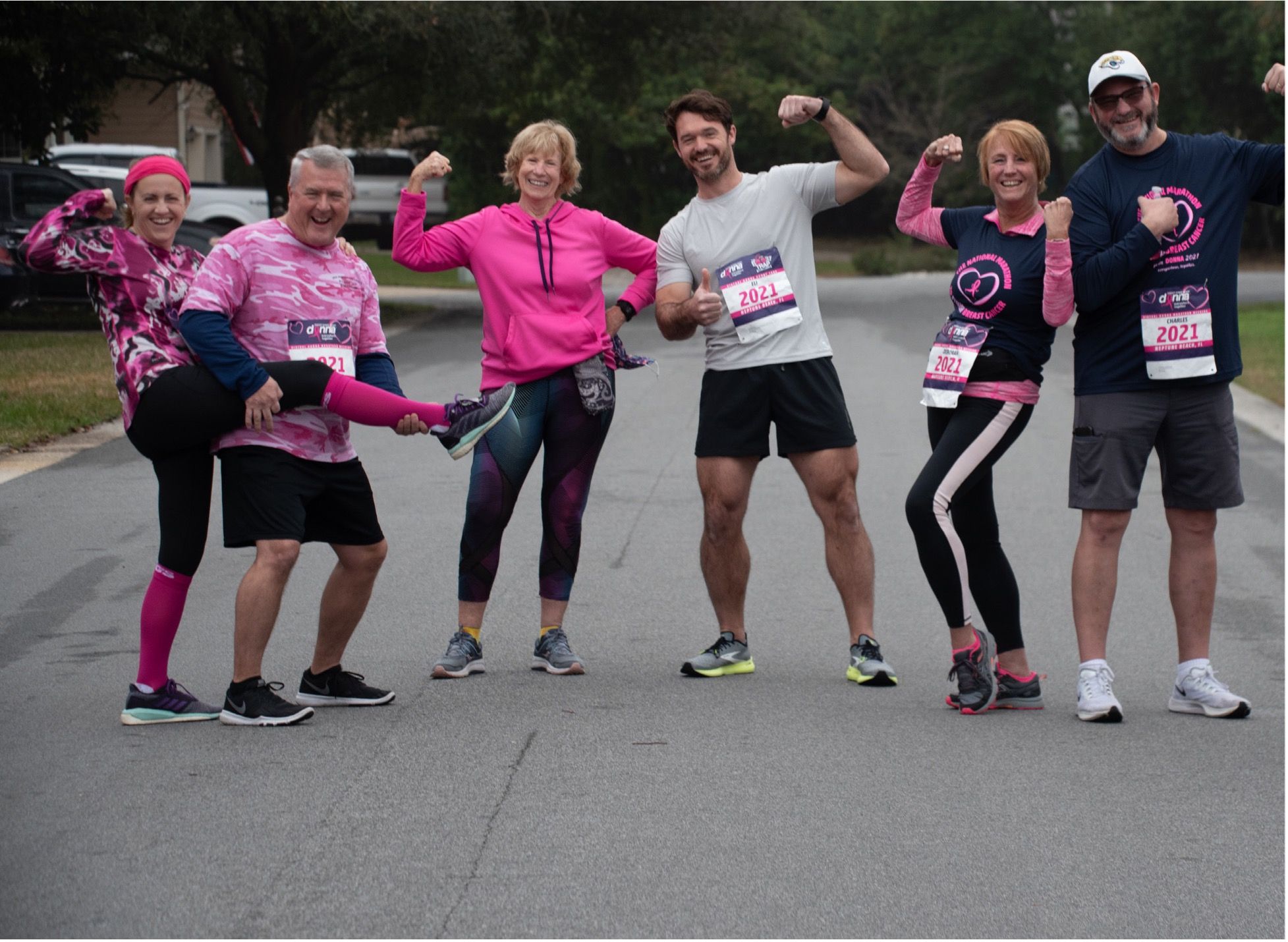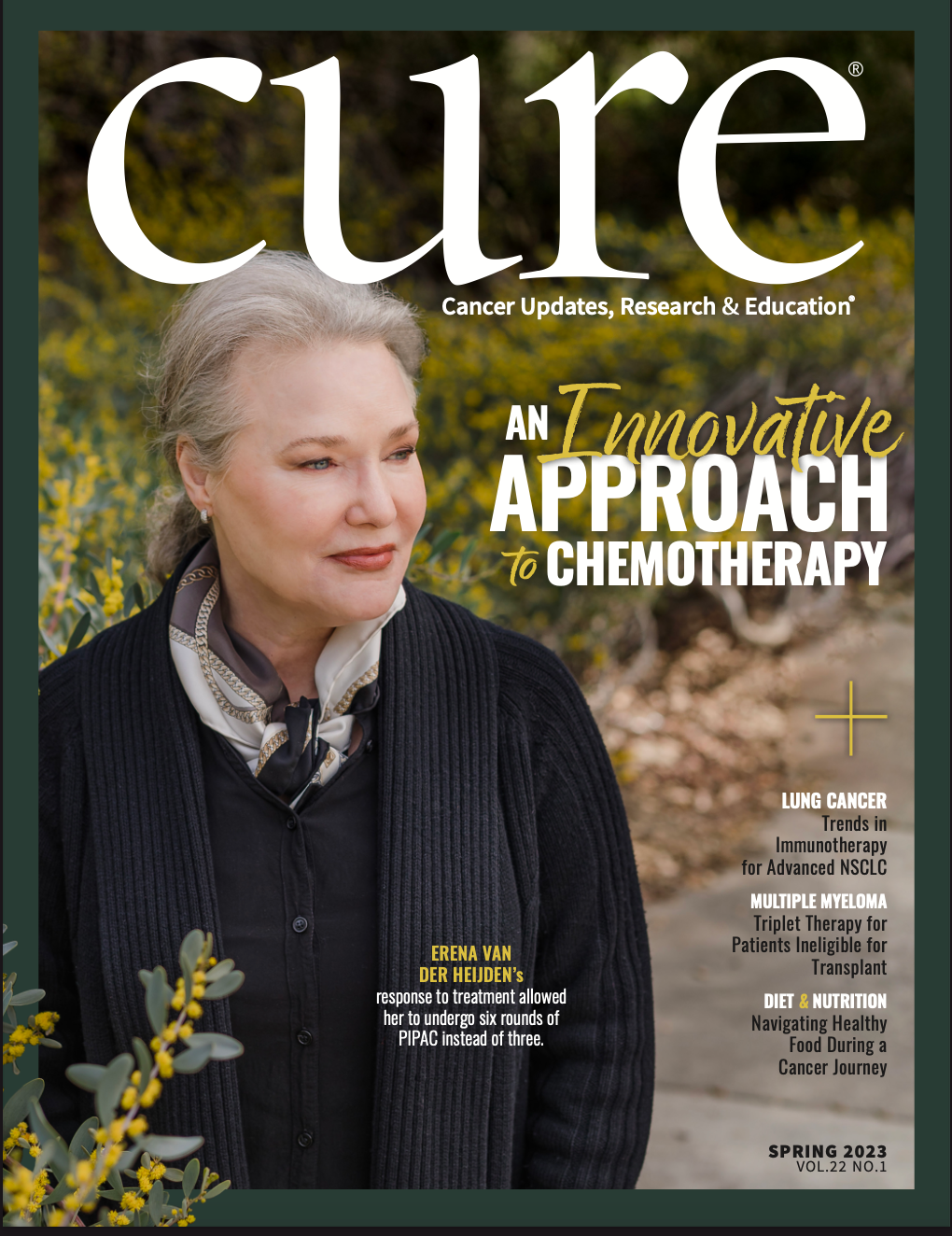Publication
Article
CURE
‘I Was Winning and the Cancer Wasn’t’
Exercise, from walking to running, allows patients to take control of their bodies at a time when things may feel out of reach during their cancer journey.
Deborah Carpenter and others participated in this year's virtual 110 Mile-a-Day Challenge.
Photo provided by the Donna Foundation

Deborah Carpenter has always prioritized movement, whether through walking, jogging or even running. But after she received a diagnosis of breast cancer in 2007, she learned how much exercise was able to give her a boost not only physically but also emotionally and mentally.
“I decided I didn’t want cancer to beat me,” Carpenter told CURE®. “How I’d manage that was staying busy physically. I figured if I could stay physically fit, that would help a lot of ways — even emotionally, mentally — to keep myself going. I felt like I was winning and the cancer wasn’t.”
The retired nurse lives in Jacksonville, Florida, and has participated in several DONNA Foundation events like its Marathon Weekend, when she would run its half marathon.
This year, she participated in the organization’s 110 Mile-a-Day Challenge, a virtual event that challenges participants to walk 1 mile per day for 110 days to show how walking even a short distance can be beneficial.
CURE® spoke with Carpenter about how exercise helped her through her cancer journey and advice she offers patients based on her experience.
Q: Can you tell us about your cancer journey?
A: In April 2007, I found a lump while I was doing my self- exam. I have had mammograms annually and this was six months after my mammogram. I just happened to find this one. Then it was confirmed in late May.
I had surgery in June, when I chose to have a lumpectomy. ... As it turned out, good news. God is great. And I had no lymph node involvement. It was a great, great relief. But I did have to have chemo and radiation after.
During that time, the first DONNA Marathon Weekend was getting ready to kick off. I started preparing for that event during my treatment, so in 2008, I did a half marathon for The DONNA Foundation.
Q: Were you a runner before your diagnosis?
I’ve always been. I like to walk and jog. In fact, I was a runner for years when I was in college, and then I kind of got out of it. Then I stopped working out for years. You have kids, you get busy and you put yourself last. So I hadn’t done anything for a long time. After I received my diagnosis, I had started walking a little bit more.
Q: Do you think keeping active helped with side effects?
A: I do. Even through chemo, I didn’t throw up a lot. People talked about how they lost weight. I didn’t have that problem.
I’m not sure there’s any research for that, but I had some friends who had gone through chemo as well and were not active. They did seem to have more issues with that. But more importantly — and this was huge — a couple of those friends did not do any exercise. And I think they never mentally recuperated from it. They were always thinking about how they have cancer, whereas I kept myself busy physically. I actually felt pretty good because of what I was doing. And again, I think mentally — more than probably anything else — it helped me.
Q: Where are you with your cancer journey now?
A: I’m done with everything. I just went back to the breast clinic at Mayo Clinic not because there’s anything wrong with me, but because chemo put me into early menopause. As I’m getting older — I’m 62 — I was starting to find that I wasn’t feeling the same energy-wise. It was hard to keep weight off even though I was exer- cising. I wanted to start taking hormones. Because of my diagnosis — it was estrogen positive — they did not want to put me on hormones.
So I went back because I wasn’t feeling like myself.
The team did put me on very, very, very low-dose hormones, but it’s enough that it’s made a difference. When I told the doctor, “I don’t even feel like walking anymore,” the doctor said she didn’t want me to stop jogging and walking because it is so important to stay physically fit to help with cancer diagnosis and recurrence.
She really felt that that was important. I’m not on high-dose hormoneslike some women my age are, but it’s enough. She started me very, very low. We only had to step up the dose one time for me to start feeling like Debbie again.
Q: Tell us about your involvement in the DONNA 110 Mile-a-Day Challenge.
A: I haven’t done the half marathon for a couple of years because of my age, and my knees are starting to go bad. Before my cancer diagnosis, I loved staying fit. I also love the idea that — I’m pretty competitive, too — I can get out there and even walk a mile a day to be a part of that, to help raise awareness, to help myself. It’s a goal I had to do in my mind. I had to do at least a mile a day, if not more. Most times I did more, like not an astronomical 10 miles, but maybe 3 miles, 4 miles a day. I love that event. I did it last year as well in ’21. It doesn’t take a lot of time. It keeps me active. It helps an organization that I really believe in. And my husband does it with me, too. Anybody can do that. Anybody can go around and walk around the block a couple of times a day and get their miles in. It’s really fun.
Q: What advice would you give to patients who want to start becoming more active?
A: I think that being physically fit helps. Mentally as well as physically, it gives you something to focus on. It’s like, it’s time to get out there and get a walk in. It’s not like, I have to deal with this cancer.
There are days when you don’t feel like doing it when you’re going through treatment. I’m not going to say that that’s not the truth because that is the truth. There are days that I didn’t feel physically like I could do it. There were days that I had little pity parties for myself. I couldn’t do it. However, you can still do it the next day or the next day, and you still feel like you’ve accomplished something.
It’s not like I can get out there and run 13.1 miles because of what I’m going through. And I feel bad about that. But I can walk around the block a couple of times. There’s something about logging those miles and seeing the progress you’re making.
The fact that you’re going through treatment and so many other things are restrictions for you. Like for chemo, for example, I couldn’t be around a lot of people. My kids had to be careful about who they brought in the house. But (walking) I could do myself; I could do that for me. I could go out there and I could walk and log those miles and see what progression I’ve made.
I didn’t want it to beat me. I wanted to be in control of what was happening to Debbie. If you can’t go out and run 10 miles a day or 5 miles, you can go out and walk a mile a day. Most everybody can do that. You don’t have to do it all at once.
For more news on cancer updates, research and education, don’t forget to subscribe to CURE®’s newsletters here.




